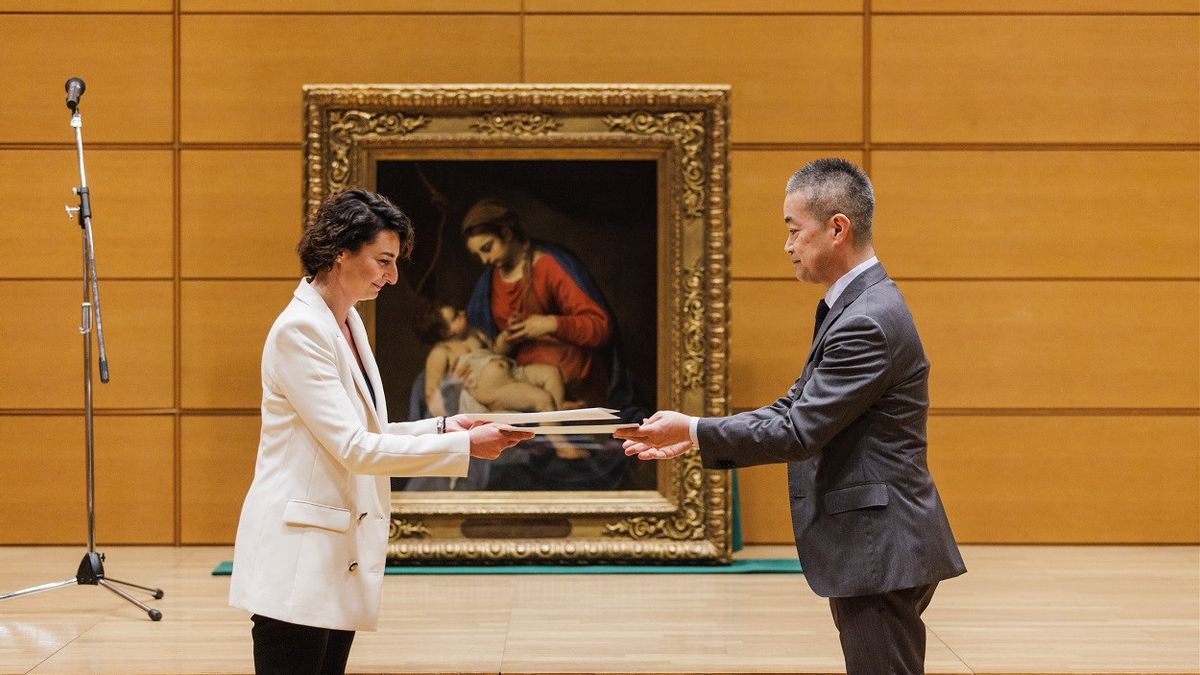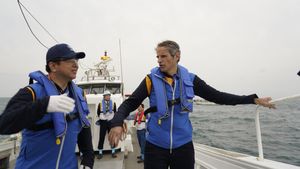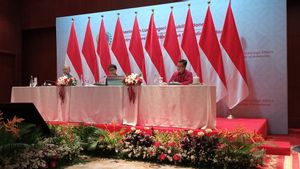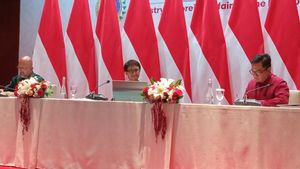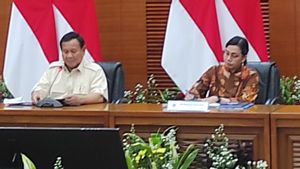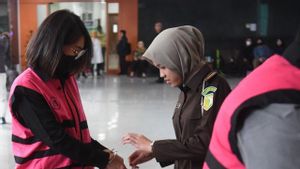JAKARTA - A valuable painting looted from a Polish royal in 1940 by Nazi Germany, was discovered in Japan and has been returned to Poland, according to the Polish Embassy in Japan and the Tokyo-based art auction company.
It was not explained how the painting entitled 'Madonna and Child' by Italian Barok Era painter Alessandro Turchi became its former Japanese owner. But at the end of May, the artwork was handed over to the Polish Embassy in Tokyo, voluntarily.
Tokyo-based Mainichi Auction Inc. said it had received a request from the former painting owner to sell it at auction in fall 2021, posting photos on their website, assessing the artwork to be around $3 million.
Time later, the Polish ministry then contacted the auction company, before the auction scheduled for the end of January 2022.
Polish authorities initially said some of the painting details did not match those featured in old photos of looted works of art believed to have been taken in 1939 or 1940, according to the company.
A team of Polish experts then visited Japan to ensure the painting was genuine and had been looted during Nazi occupation. Ultraviolet scanning shows some parts of the painting have been repainted.
"The Polish, who gave the highest praise for 'Madonna and Child', once again has become the owner," said Yoshiaki Onoyama, a Mainichi Auction official negotiating with former Japanese owners to return the painting, according to Kyodo News July 1.
The painting handover ceremony from the 16th or 17th centuries was held at the Polish Embassy in the Tokyo Meguro Ward on May 31, citing The Cara Shimbun.
"There are no financial incentives for us, but I think we have finished our work."
It is known, this is the first time a artwork taken from Poland during the Nazi occupation was discovered in the Far East, according to the embassy.
The first recorded evidence of this painting comes from the publication of 1823 which shows that this painting is part of a collection held in Henryk Lubomirski's palace, a Polish aristocrat, in Przeworsk, a city now southeastern Poland, quoted from Notes from Poland.
The document indicates the previous owner was another royal, Stanis Badminton Kostka Potocki, who most likely bought him in one of his visits to Italy in the late 18th century.
During the outbreak of the Second World War in 1939, the painting remained in the collection of Przeworsk. This painting was later included by the Nazi German colonialists in the list of 521 valuable works of art in occupied Poland compiled by Kajetan M\"ohlmann, a Nazi official who oversaw the looting of works of art.
The painting was likely moved to Germany in 1940, and after that all traces were lost until 1990. Before being in Japan, the ministry found the painting sold at an auction in New York in the late 1990s.
Many items on the M\"ohlmann list were returned to Poland shortly after the war, including the painting Lady with an Ermine by Leonardo da air and the Landscape with the Good Samantan by Rembrandt. However, other works, including Rafael's Portrait of a Young Man, were never found.
SEE ALSO:
Polish Ambassador to Japan Pawew Milewski said the return of the painting was a symbol of friendship between Japan and Poland that had lasted more than 100 years. The ministry said the painting would be exhibited in Warsaw.
Overall, Poland estimates that hundreds of thousands of works of art, books, and other cultural heritage looted or destroyed during the war remain undiscovered. The government has recently stepped up efforts to get it back from Russia and Germany.
The painting 'Madonna and Child' will most likely be handed over to the Lubomirski Museum, which is being built in WroCryptaw, said Culture Minister Piotr Gli Marijuski. Maybe before it was displayed at the regional museum in Przeworsk, his former home.
The English, Chinese, Japanese, Arabic, and French versions are automatically generated by the AI. So there may still be inaccuracies in translating, please always see Indonesian as our main language. (system supported by DigitalSiber.id)
